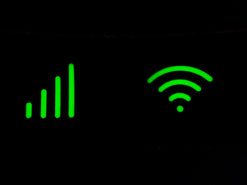At Nassau National Cable we work to give you the best quality services at competitive prices. As part of our efforts, we are constantly working to make it easier for you to choose, purchase, and handle cables according to your specific needs. this is the goal of value-added services, which help to sculpt cables according to your needs, identify and protect them.
RESOURCES AND CHARTS
- Resources Charts and Infographics
- Wires and Cable Blog
- Case Studies
- Value Added Services
- Podcast
- White paper
Content
Voltage Drop Calculator
Why Voltage Drop Occurs in An Electrical Circuit?
Voltage drop occurs because of the increase of the resistance in the electrical circuit, which happens due to the rise in electrical load.
The size of the wire also contributes to the voltage drop. The larger wires experience less voltage drop than the smaller ones, given that their length is identical. The length itself also contributes to the voltage drop. Longer wires have more voltage drop than the smaller ones. The voltage drop calculation is used to determine if the Voltage and cable type is suitable for that distance. If the voltage drop is significant, either voltage would need to be increased, or the conductor needs to be replaced.
What Does Voltage Drop Depend On?
While some voltage drops may occur naturally, age and corrosion of the electrical wire and cables will almost certainly lead to constant drops in voltage. Suppose you are worried about the voltage drop. In that case, it is best to choose copper wires instead of aluminum ones because copper is a better conductor of electricity that produces less voltage drop. For more information about how different metals score with voltage drop, click on the resistivity chart.
Electromagnetic noise and poor quality of cable insulation will also likely lead to voltage drop. Other factors that might contribute are the wrong wire gauge and wire splicing performed against the standard rules.
Why Is Voltage Drop Important?
Calculating voltage drop is necessary because of potential safety concerns and loss of power, and damage to wire and cables. It helps determine whether the circuit operates the components efficiently and power is delivered to the end customer/application is within the prescribed limits. Any reduction in voltage from incoming power lines may result in applications underperforming. It can also result in significant losses in power transmission.





























